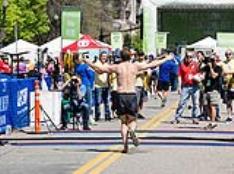
As a coach, I've noticed that the most difficult type of workout for runners to run at the correct pace are lactate-threshold workouts. Many runners, especially those who are inexperienced with these workouts, have a difficult time holding back the pace and finding their fastest sustainable aerobic pace.
Lactate-threshold pace is about 10 to 15 seconds per mile slower than 5K race pace (or about 10K race pace) for slower runners (slower than about 40 minutes for 10K). If using a heart-rate (HR) monitor, the pace is about 75 to 80 percent max HR. For highly trained and elite runners, lactate threshold pace is about 25 to 30 seconds per mile slower than 5K race pace (or about 15 to 20 seconds per mile slower than 10K race pace), and corresponds to about 85 to 90 percent max HR. The pace should feel "comfortably hard."
More: Why Lactate Threshold Is Crucial to Becoming a Better Distance Runner
It seems that many runners and coaches miss the nuances of the lactate threshold when prescribing training paces for workouts. Every time I read a magazine or mainstream book about running, I read that lactate threshold pace is 25 to 30 seconds per mile slower than 5K race pace, 15 to 20 seconds per mile slower than 10K race pace, and between 10-mile and half marathon race pace. However, these guidelines are only true for very good runners.
The better a runner's endurance, the longer he or she can hold his or her lactate-threshold pace, and the better he or she is at sustaining any fraction of his or her lactate-threshold pace. In other words, if a 15-minute 5K runner can run 30 seconds per mile faster than lactate-threshold pace (which equals 110 percent of lactate-threshold pace) for those 15 minutes, certainly a 25-minute 5K runner is not also going to be able to run 30 seconds per mile faster than lactate-threshold pace (which equals 106 percent of lactate-threshold pace) for 25 minutes, 10 minutes (and 66 percent) longer than the good runner. Someone who runs a 10K in 50 minutes is likely running slower than his or her lactate-threshold pace for a 10K, not 20 seconds per mile faster. And someone who runs a half marathon in 1 hour and 45 minutes is certainly not running anywhere near lactate-threshold pace.
- 1
- of
- 3
About the Author

Get ACTIVE on the Go


13.one Half Marathon
Get expert advice and guidance as you progress in your journey to becoming an avid runner.
Available for iOS







Discuss This Article